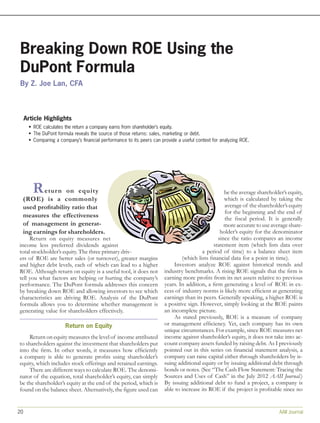The document discusses return on equity (ROE) and how to analyze it using the DuPont formula. The DuPont formula breaks down ROE into three drivers: profit margin, asset turnover, and financial leverage. This breakdown allows investors to determine which factors are helping or hurting a company's performance and ROE. The document provides an example calculation of the DuPont formula for a sample company. It finds the company's declining ROE was primarily due to decreasing financial leverage through less debt usage, while margins and turnover improved. Comparing the company to others in its industry provides further context for the ROE and its drivers.




